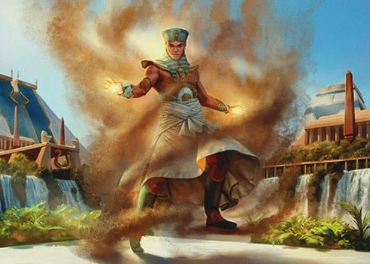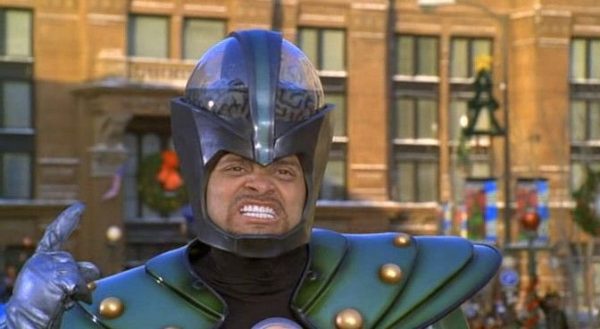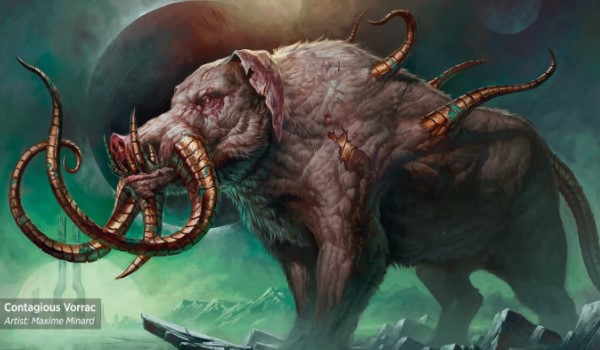Are you a Quiet Speculation member?
If not, now is a perfect time to join up! Our powerful tools, breaking-news analysis, and exclusive Discord channel will make sure you stay up to date and ahead of the curve.
While there is still some time left to play Phyrexia: All Will Be One (ONE), the advent of Shadows Over Innistrad Remastered and the upcoming March of the Machines is causing us to switch focus a little earlier than planned. In our time-honored tradition, we now send off an embattled, but misunderstood, format the way we always do: with a bunch of subjective lists and awards!
Archetype Power Rankings
- RG Oil: RG Oil features a murderer's row of top commons. Red provides access to some of the format's best removal; the creatures are strong, and range from aggressive to midrange. The haste creatures like Chimney Rabble and Furnace Strider are potent top-decks, and the litany of one- and two-drops make this deck feel extremely consistent. When this archetype is open, it has it all.
- Wx Toxic: The best Toxic decks get the most out of their white cards. Crawling Chorus and Flensing Raptor consistently deal early poison, and the deck doesn't stop there. Basilica Shepherd and Incisor Glider represent a lot of damage, while Planar Disruption and Indoctrination Attendant give the deck a lot of gameplay as well.
- RW Equipment: This deck benefits from using the two best colors. The synergies aren't as robust as in Toxic or Oil, but the deck has access to a lot of really good cards.
- UW Artifacts: This deck is a little finicky, but has some solid tools. Cards like Eye of Malcator are a bit of a liability, while Mandible Justiciar is an excellent two-drop. Chrome Prowler is under-drafted, and this deck gets the most out of it.
- The other red decks: Just having access to red cards goes a long way. While blue and black aren't ideal pairings for them, if you can get deep enough in red, it often doesn't matter.
- Sorry, Sultai: The Sultai trio struggles to keep up with the aggression in the format. That being said, when Gitaxian Raptors are wheeling, these decks can hold their own. The proliferate synergies don't matchup well in the format, but they're not nothing.
Color Rankings
- Red: Red's commons are deep and versatile. While the only red decks I really want to be in are RG or RW, the color is so deep that as long as any deck is mostly red cards, it feels fine.
- White: White has the most partners. As the format's most aggressive color, basically every other color can support its plan. Whether we are a white-based toxic deck, or leverage artifact creatures to beat down, starting off with white cards means we have a lot of options. Unlike red, however, the white cards are more specific to their archetypes. While many of the toxic cards are good enough for non-toxic decks, they lack the raw power level of the red cards.
- Green: There's a significant drop-off between white and green. Green pairs well with red, but after that has a hard time finding its footing. While it can be a decent support color, it is pretty shallow at common. That being said, uncommons like Cankerbloom, Evolving Adaptive, Armored Scrapgorger, and others raise the power level of any deck.
- Blue: A lot has been said on blue in the past weeks, but it still ranks fourth. Blue's defensive posture is a liability in the format, and while Gitaxian Raptor and Chrome Prowler are both strong, it has a lot of commons that are just too slow.
- Black: Black is inexcusably shallow at common, and lacks strong enough uncommons to work consistently.
The Uncommon Common
While the best common in the format is probably Hexgold Slash, that's not a card that really feels like an uncommon. This was the hardest format to select just one card for this award. Crawling Chorus was a personal favorite, and Chimney Rabble does a lot of damage. However, the Uncommon Common award goes to a card that single-handedly elevated the power level of its color.
Contagious Vorrac does a lot in this format. The body does a nice job holding the fort, and while this isn't a format that I wanted to splash in, this card made it easier. Additionally, having the flexibility to proliferate a poison counter, while also adding oil to a Gitaxian Raptor or Evolving Adaptive, is a valuable piece of versatility.
The Gustwalker Trophy

This column has always recognized the value of two-drops. In this format, the rankings have fluctuated. Mandible Justiciar and Duelist of Deep Faith both have strong cases. The data points to Barbed Batterfist as the best performing two-drop. However, there's another red two-drop that I prioritize over the For Mirrodin! equipment.
Axiom Engraver does a lot of small things that add up to a potent package of value. It's easy to overlook the ability to sift through extra lands or make sure we hit them on curve. It gets value off of proliferate and helps power up the oil synergies. However, its synergy with the scourge of the format puts it over the top.
The Scourge of the Format
It's the middle of a game that's stalled out. We're trading tactical attacks with our opponent, trying to manage the board as best we can. We're both trying to scrape out small pieces of value, and then out of nowhere, the game ends. Because of a common.
Hazardous Blast is the type of card that can end a game on the spot, and in such an aggressive format, it breaks parity like no other card. When we're in a close game, it's the number one card we're hoping to avoid. People probably play it in too many decks; however, Axiom Engraver can help us bin it when it doesn't immediately win the game. Because of cards like the Engraver, we can fit this card into more decks.
This is a card that we want to be able to play around, but often times won't have the opportunity to. Sometimes it will win us games no other card can. Unfortunately, it will cost us some, too.
Common Removal Power Rankings
- Hexgold Slash: Cheap removal is so important in this format, and the fact that this thing can knock out four- and five-drops in the right matchup makes it especially valuable.
- Planar Disruption: While enchantment-based removal is a liability, the aggressive nature of the format lessens the drawbacks. Arrest for two mana without drawbacks is probably the best this effect has ever been.
- Anoint with Affliction: Great removal in a really bad color.
- Ruthless Predation: Epic Confrontation still helps green decks snowball their advantage one set later.
- Volt Charge: I expected this card to be a top common, but it underperformed. This format was too fast for this damage-to-cost ratio. The proliferate was nice, but rarely mattered.
- Whisper of the Dross: This card was a poor man's Hexgold Slash, but Slash was really that good. I wanted at least one of these in all my black decks. It helped us take back the play, and the proliferate matters in black.
- Mesmerizing Dose: This card rose up my pick order towards the end of the format. My best blue decks did not want the double blue, but when they did, this card was fine. The decks that want this card make great use of the proliferate.
- Charge of the Mites: This was a decent effect in my heavy aggro white decks. While I never happy to include this card, it still could move threats out of the way.
- Annihilating Glare: There's not a ton of extra material in the format. Still, this kills anything.
- Molten Rebuke: Too expensive, and better off in the sideboard.
The Myron Larabee Award

This is a new award for our sunset ceremony. The Myron Larabee award is named after the Jingle All The Way antagonist, precisely crafted by the veteran thespian Sinbad. At the climax of the film, Myron falsely claims victory, attributing his success to his "bigger brain." Soon after, inevitable hilarity ensues as our namesake villain falls victim to fate.
Thusly, this award goes to a card that often underperforms, but occasionally, in its greatest moments, makes us feel like geniuses. The inaugural Myron Larabee Award goes to an infinitesimal arachnid: Copper Longlegs.
This card could force action in the early turns and slow our opponents' development, and in its best moments, was a blocker that saved us damage, while contributing to our poison clock. Don't be mistaken, this card was mostly terrible. In its best moments it was a godsend, the touch of genius that put our deck over the top. For that, we salute the Spider.
Final Words and Format Rating
There were a lot of complaints levied against Phyrexia: All Will Be One. It is an aggressive format with demanding rules of engagement. However, adhering to those rules yielded domination. It's hard not to love a format when we're winning, and this was my winningest format since using 17lands. This format demands we play to the board early and often.
ONE did have some failings, and ones that may have made the format look patently terrible to those not following its strict playbook of aggression. Red and white were significantly better than blue and black. This discrepancy in power level made it too easy to go red and white, and that imbalance is an overall negative.
The aggression did a nice job painting over some of the absurd bombs in the format, but it would have been nice to see slower decks have more of an opportunity. The black proliferate theme felt specifically underdeveloped.
Overall, I give this format a C. It was a lot of fun, but not quite on the level of recent favorites like Dominaria United or Kamigawa Neon Dynasty. Here's hoping our coming limited formats provide a better experience... and, of course, plenty of trophies!





